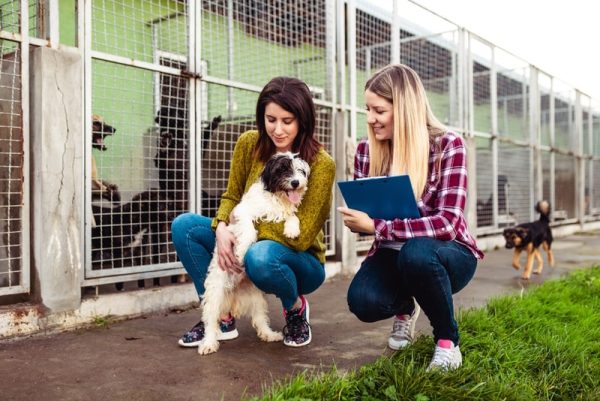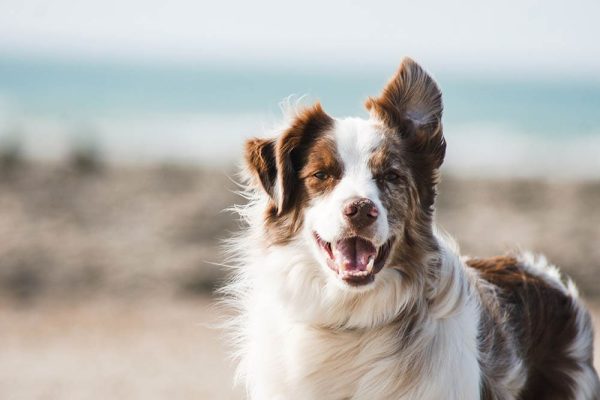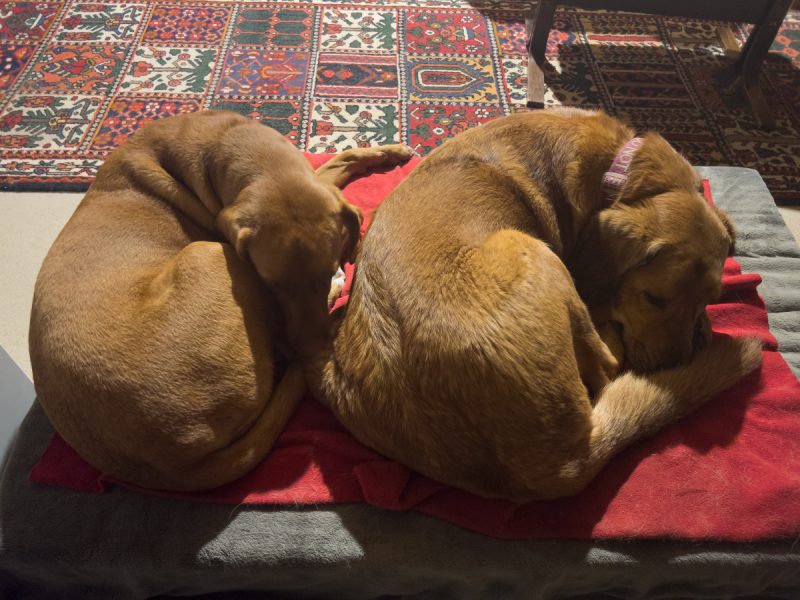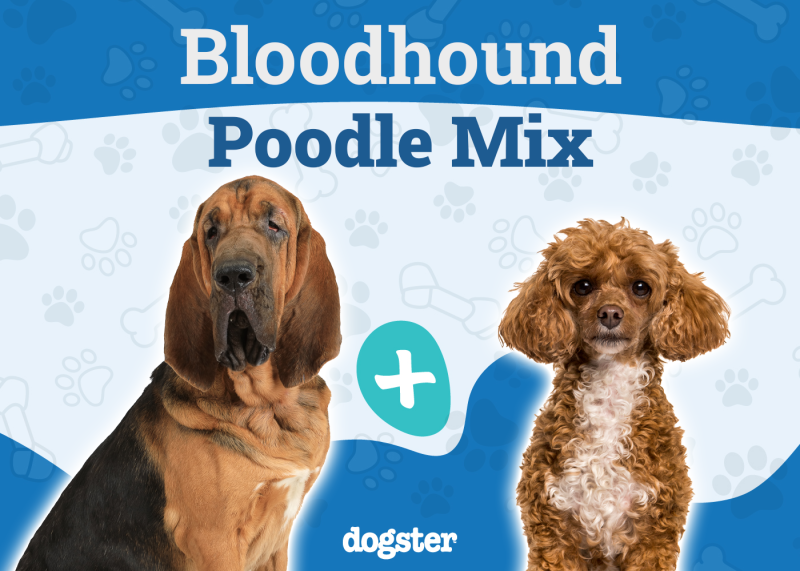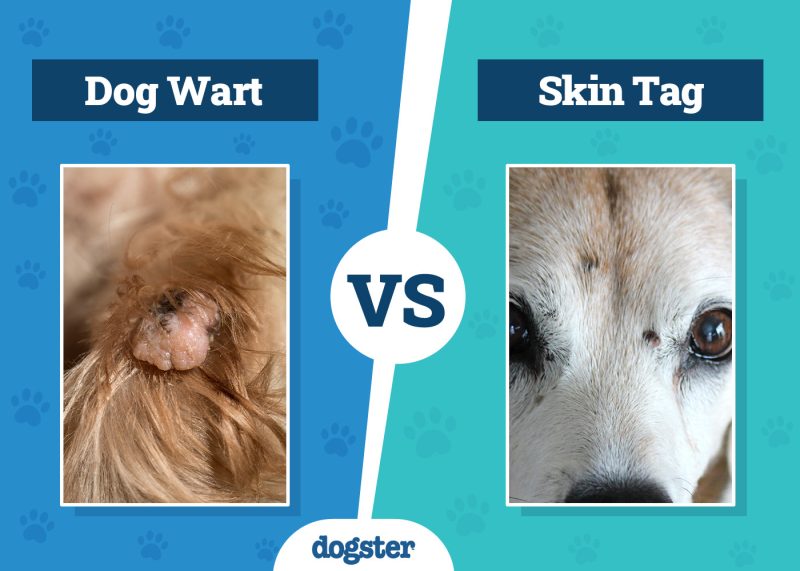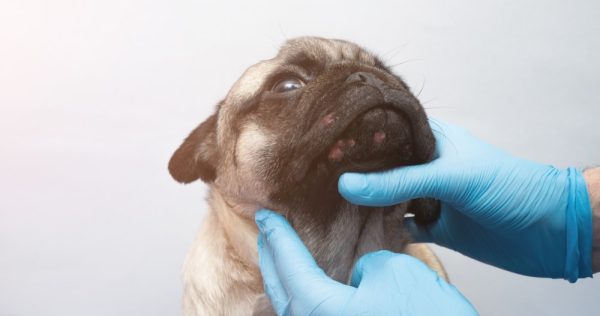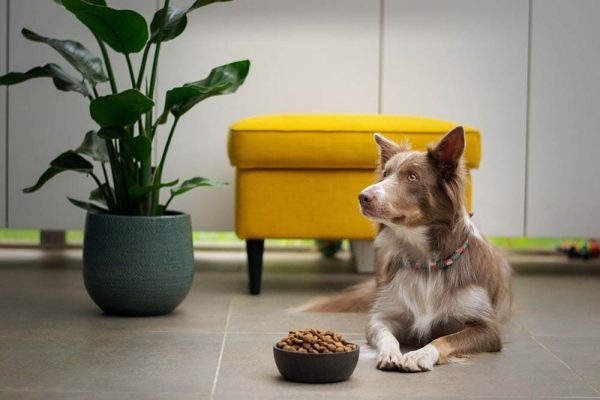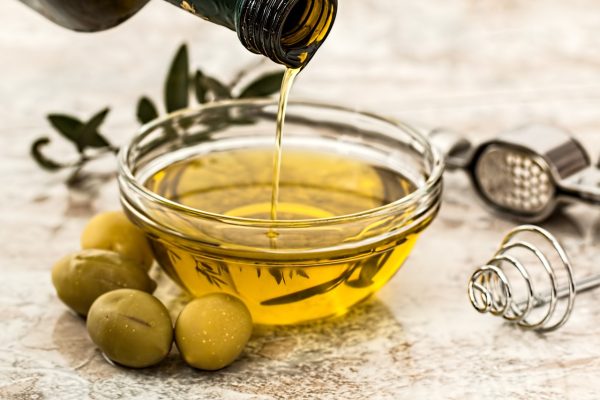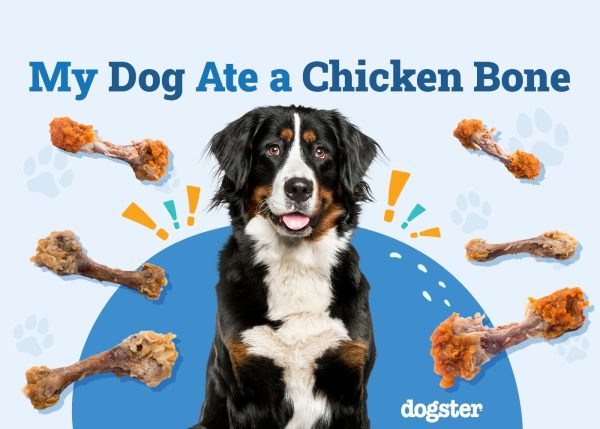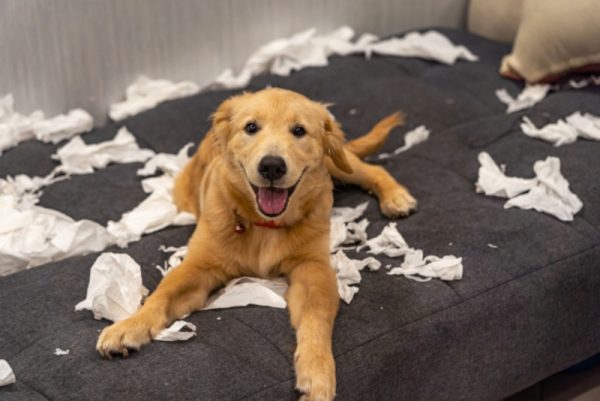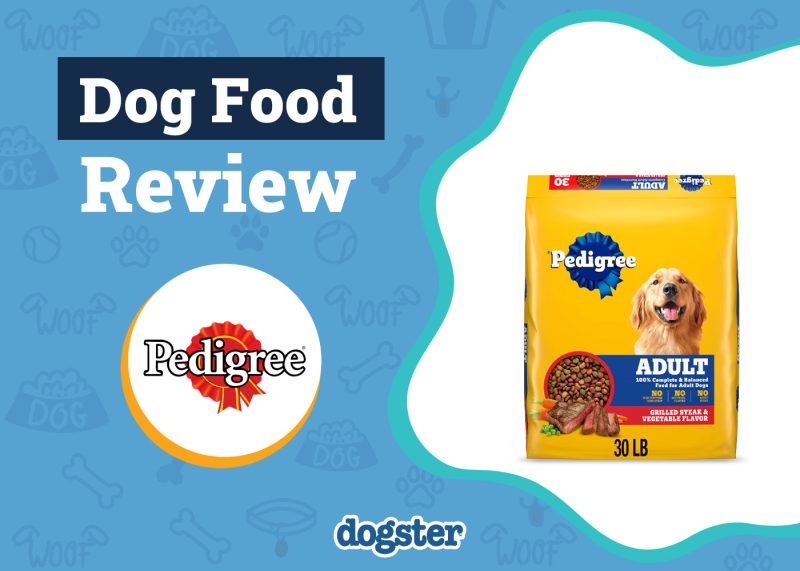In this article
View 8 More +Doxie Poos are bright and playful dogs that were bred to be companion dogs. They’re not an officially recognized breed and don’t have official breed standards. So, they come in a variety of sizes and colors, and their appearances and body shapes can also differ significantly.
Regardless of their appearance, Doxie Poos are commonly known to be friendly and affectionate dogs. They often make good pets for families with young children and tend to make life more fun and exciting for everyone around them. Here’s what you can expect life with a Doxie Poo to look like and how to provide the best care for them.
Breed Overview
Height:
5–15 inches
Weight:
6–30 pounds
Lifespan:
10–18 years
Colors:
Black, brown, white, cream, red, apricot
Suitable for:
Families with children, those looking for a low-shedding dog
Temperament:
Loyal & loving, intelligent, easy to train, friendly, gets along with other pets
Doxie Poos are dogs that are a crossbreed between a Dachshund and a Poodle. While Doxie Poos are one of the lesser-known Poodle mixes, they’re still wonderful companion pets that are worth getting to know. They have an adventurous spirit and love following their owners everywhere. Their friendly and playful personalities are sure to brighten up anyone’s day and bring a smile to everyone’s faces.
Doxie Poo Characteristics

Doxie Poo Puppies
The Dachshund Poodle mix is not very common, but you can still find several breeders that have Doxie Poo puppies. These breeders usually specialize in breeding Dachshund mixes and may have Doxie Poo litters periodically. Doxie Poos can also be found in dog adoption centers. There are also several Dachshund rescues that will take in Dachshund mixes and have Doxie Poos available for adoption.
Doxie Poo puppies are very playful and energetic. They tend to get bored easily and will love playing games and hanging out with their families. They’re also curious and smart, and learning new tricks often becomes a fun hobby for them.
Despite their small size, Doxie Poos may not be the best for apartment living. They have a loud bark and can develop a habit of barking frequently, which can cause them to become noisy neighbors. It’s often helpful to teach Doxie Poos a “no bark” command at an early age to prevent excessive barking in the house.
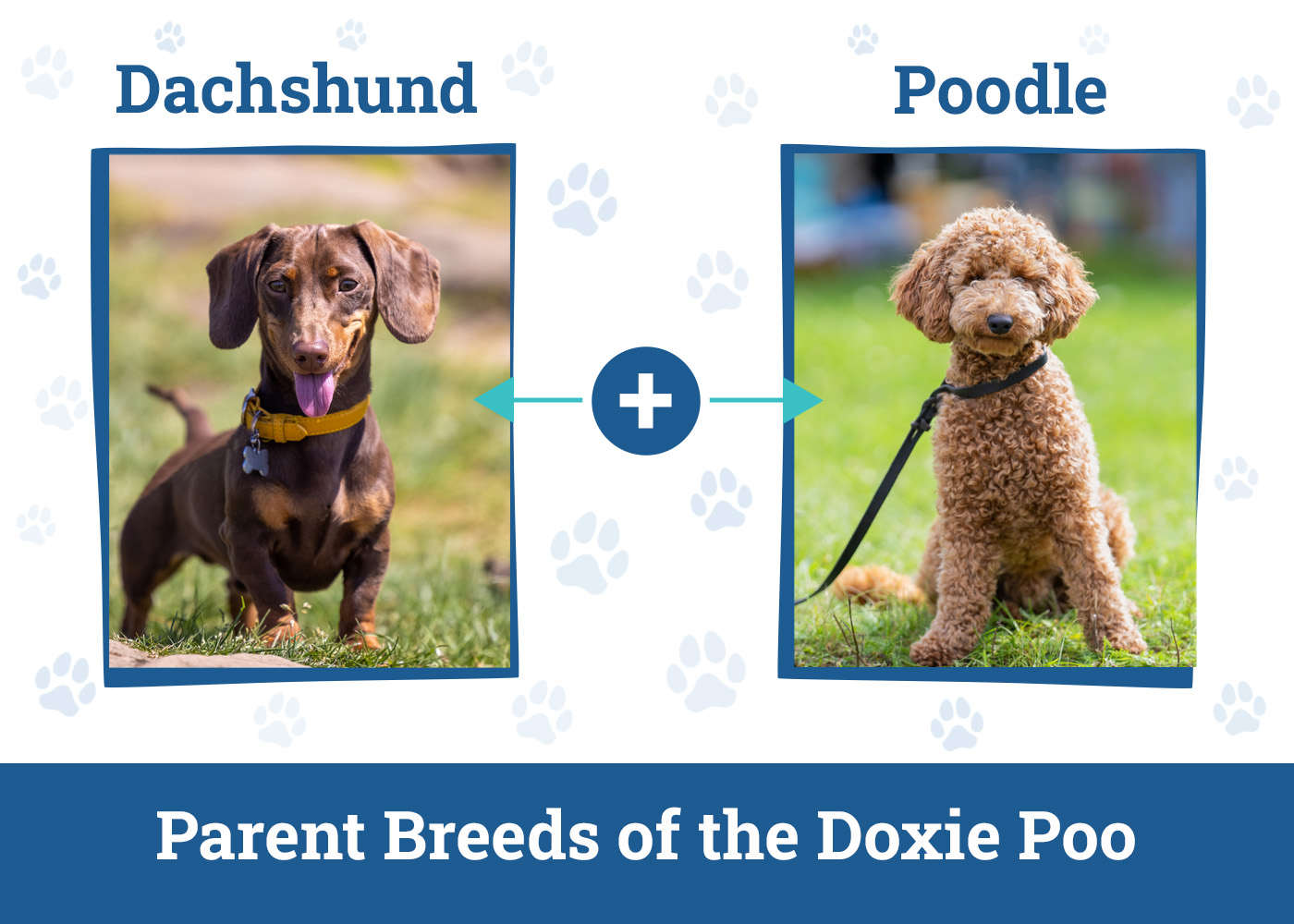

Temperament & Intelligence of the Doxie Poo
A Doxie Poo’s temperament will vary depending on which traits they’ve inherited from their parents. Both Dachshunds and Poodles are confident, intelligent dogs. Dachshunds can be a little stubborn at first, but once they get a good grasp on obedience training, they’re quick learners. Poodles are known to be one of the most intelligent and trainable dog breeds, so they’re a popular breed for first-time dog owners.
Doxie Poos often have big personalities and won’t shy away from being in the spotlight. They also love receiving affection and giving affection in return. They form strong bonds with their families and love being included in all family activities.
Are These Dogs Good for Families? 🏠
Doxie Poos make wonderful family dogs. They have playful, non-aggressive temperaments and can be quite patient with children. However, it’s still important to supervise children when they play with dogs and to teach them how to interact with dogs appropriately. Smaller Doxie Poos are more susceptible to injuries, so children must learn to play with them gently and respectfully.
Does This Breed Get Along With Other Pets? 🐶 😽
Doxie Poos usually prefer human companionship over canine companionship and are perfectly fine with being the only pet in the home. However, they can get along with other dogs fairly easily. Socializing them at an early age helps immensely with them adjusting to life with other pets in the home.
Some Doxie Poos have a strong prey drive, and their curiosity can sometimes get them in trouble. Therefore, it’s not recommended for Doxie Poos to live with other kinds of pets in the home, particularly small mammals, birds, and reptiles. It’s also important to keep expectations realistic and know that Doxie Poos may never get to a point of being fully trusted to be left unsupervised with another type of pet.

Things to Know When Owning a Doxie Poo
Food & Diet Requirements 🦴
Your Doxie Poo’s food and dietary requirements will depend on their age, size, and activity level. It’s best to consult your veterinarian before making any changes to their diet. Your veterinarian can help you determine what types of food will benefit your Doxie Poo and provide appropriate serving sizes.
Doxie Poos are a generally healthy breed, so they don’t usually require eating special diets and are just fine with eating high-quality dog food. However, they can develop hip and joint issues and eye problems as they age. So, you’ll want to consider adding bone and joint supplements and vision health supplements as your Doxie Poo grows older.
Exercise 🐕
Doxie Poos have a moderate level of energy and need at least 30 minutes of exercise a day. They’ll enjoy going on walks, playing at the dog park, or chasing a tennis ball or frisbee. Along with physical exercise, Doxie Poos need plenty of mental exercise and stimulation. They’re very intelligent and are often enthusiastic learners. They’ll love enrichment toys, like treat dispensers and puzzles. They can also develop a hobby of learning new tricks or participating in dog sports like agility events.
Training 🦮
Doxie Poos are known to be easy to train because they’re intelligent and eager to please. They respond very well to positive reinforcement and are highly motivated by rewards. Doxie Poos do best when training sessions are kept short and fun, and many owners find success when they schedule multiple short obedience training sessions throughout the day.
Smaller Doxie Poos may have a more challenging time with potty training than larger Doxie Poos. They have smaller bladders and require being let out more frequently. However, with some time and patience, your Doxie Poo will learn to go outside to potty and won’t have to be let out as frequently when they get a little older.
Grooming ✂️
A Doxie Poo’s grooming needs will depend on their coat type. If their coat type is more similar to a Poodle’s coat, they’ll usually shed less, but they require daily brushing because the thin hairs on their coat are extremely prone to tangling and matting. Doxie Poos with wavier coats can get by with missing a day of brushing, but they’ll still require regular brushing to prevent their coats from matting.
The frequency of baths will depend on a Doxie Poo’s activity level. Most Doxie Poos will benefit from having a bath every 4–6 weeks. It’s important not to give too many baths to Doxie Poos because overbathing can cause their skin and coat to dry out and cause skin irritation.
Lastly, Doxie Poos will benefit from going to a professional groomer every 6–8 weeks. Their coats can grow fairly long, so they’ll feel refreshed after a nice trim. Taking your Doxie Poo to a groomer will also help make brushing and maintaining the coat much more manageable.
Health and Conditions ❤️
Doxie Poos are fairly healthy, but as with all dogs, they can have a higher risk of getting certain genetic diseases. Here are some health issues you might encounter with your Doxie Poo as they age.
- Hip dysplasia
- Patella luxation
- Thyroid issues
- Addison’s disease
- Bloat
- Obesity
- Seizures

Male vs Female
There aren’t any consistently distinguishable differences between a male and female Doxie Poo. Their sizes are more likely to be determined by genetics rather than their sex. You may also notice stronger behavioral differences between dogs that have been neutered or spayed and those that haven’t. Dogs that haven’t had these procedures will display certain behaviors when they’re ready to mate and can be more aggressive or needy.

3 Little-Known Facts About the Doxie Poo
1. Doxie Poos Vary Greatly in Size and Physical Traits
Doxie Poos don’t really have a consistent size or appearance because of how they’re bred. Dachshunds come in two sizes—Miniature and Standard—and they can have either short or wavy coats. Doxie Poos can also have Toy or Miniature Poodle parents.
Dachshunds and Poodles have very different body types. Some Doxie-Poos can inherit more Dachshund traits and have shorter legs, while others will have longer Poodle legs. Since they don’t have any official breed standards, there’s really no reason for them to have a uniform appearance.
2. Not All Doxie Poos Are Allergy-Friendly
Poodle mixes are often marketed as hypoallergenic dogs. However, not all Doxie Poos will have low-shedding coats. Dachshunds are moderate shedders, so if your Doxie Poo has a wavier coat that more closely resembles a long-haired Dachshund’s coat, they might end up being a moderate shedder as well. In most cases, Doxie Poos will be minimal shedders, but Doxie Poos with wavy hair tend to shed more than those with curly hair.
3. Doxie Poos Are Newer Poodle Mixes
The first intentionally bred Poodle mixes first appeared in Australia in the 1980s. Wally Conron is credited most often for crossbreeding the first Labradoodle. The popularity of the Labradoodle gave way to more Poodle mixes appearing in the 1990s. The Doxie Poo appeared in the later part of the trend. While their exact origins are unknown, they started appearing in the scene sometime in the early 2000s.

Final Thoughts
You never really know what you’re going to get when it comes to how a Dachshund Poodle mix will look. However, you can expect these dogs to become sweet and loving members of the family. They enjoy being around their favorite people and being a part of all the action. Doxie Poos often become the life of the party and know how to have a good time.
While they may be a bit stubborn at times, they’re loyal and loving at heart. They’re devoted to their families and are excellent dogs for people looking for a companion dog and fun-loving friend.
Featured Image Credit: GoodFocused, Shutterstock


